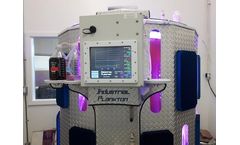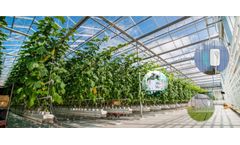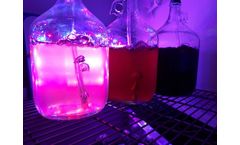Photosynthesis Lighting Articles & Analysis
12 articles found
Plant carbohydrate synthesis Plant carbohydrates are synthesized through photosynthesis. Photosynthesis is a process by which plants use solar energy to convert carbon dioxide and water into oxygen and carbohydrates. Photosynthesis occurs in the chloroplasts of plants. Chloroplasts are organelles that contain chlorophyll, a pigment that ...
We also offer a high-temperature option if your facility is not temperature-controlled. Light Like all algae, Rhodomonas requires sufficient light for photosynthesis, which is essential for its growth. Our bioreactors are equipped with LEDs that provide the necessary intensity and spectral range for optimal photosynthesis. ...
The most basic metabolic process of the plant is photosynthesis, and photosynthesis requires light energy. Three Aspects of Light Effect There are three aspects of light that should be considered when determining the effect that light has on plant growth. ...
ByUbiBot
Microalgae Growth – Light Intensity If light is one of the key ingredients in photosynthesis, will more light always generate more productivity? ...
When we talk about plants and their interaction with light, we mostly talk about photosynthesis. But this is only a small part of the story, there are numerous other mechanisms controlled by light. ...
The required light intensity is different from plant to plant. Light or CO2 limited? Light or CO2 limited? Plants require beside Water and Light a variety of so-called Macro (N,P,K) and Mico nutrients. During photosynthesis uses light energy to convert water, carbon dioxide ...
Leaves are one of the most important organs that plants have. Photosynthesis, the process by which plants produce food using light, carbon dioxide (CO2), and water, takes place in leaves. The structure and makeup of leaves are designed for photosynthesis. Light is captured by chloroplasts in leaves. Carbon dioxide is taken in ...
Leaves are one of the most important organs that plants have. Photosynthesis, the process by which plants produce food using light, carbon dioxide (CO2), and water, takes place in leaves. The structure and makeup of leaves are designed for photosynthesis. Light is captured by chloroplasts in leaves. Carbon dioxide is taken in ...
Food: Plants don’t eat food (heterotrophic)—they make it (autotrophic) by taking atmospheric CO2, water from the soil, and energy from light to make simple sugars in a process called photosynthesis. The chlorophyll molecule, responsible for the green color in leaves, is made of carbon and nitrogen, and acts as the antennae to initiate ...
But they’re not nearly as good as they could be: Thanks to quirks in the systems that have evolved to capture solar energy and use it to build sugars from carbon dioxide and water, the conversion efficiency of photosynthesis is but a few percent at best. With the need to produce more crops growing even faster than human population, it’s no surprise that scientists ...
ByEnsia
The guideline allows for a number of options within the test design, notably the options to conduct the study under diffuse light and to include an inoculum of suspended sediment. The current study was designed to investigate the potential impact of these options on the degradation rate of a representative compound. The fungicide, isopyrazam, was chosen as it was previously shown ...
Physiologically, leaf adaptation to different light regimes was characterized by: (i) the light-saturated rate of net photosynthesis (Pmax) and to less extent the photosynthetic efficiency () in sun conditions was double; (ii) in sunny conditions plants grown under shade were photosynthetically less efficient than plants grown in full sunlight ...









